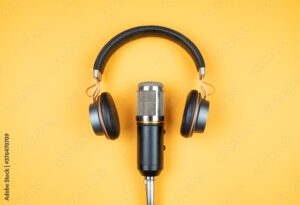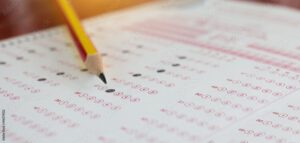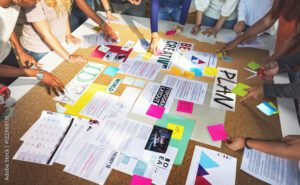We’ve all been there – facing a classroom brimming with diverse personalities, learning styles, and needs. It’s like orchestrating a symphony where every note is unique. The question is, how can we ensure that every student’s potential is nurtured and celebrated? The answer lies in differentiation – a teaching approach that tailors instruction to meet the distinct requirements of every learner. In this blog post, let’s explore the four key elements you can differentiate within your K-12 classroom.
Differentiating Product- A Variety of Ways to Demonstrate Mastery
The first element we’ll delve into is the product – how students showcase their understanding of the material. Think of product as a summative assessment at the end of a unit. Typically, teachers think of a product as a test, whether the test be multiple choice, short answer, or an essay. With differentiation, you allow students to demonstrate their mastery with a variety of choices so they can show you what they’ve learned in a way that fits their interest, readiness, or learning profile.
For instance, in an elementary math class, instead of all students taking a traditional paper-pencil math test, students might have the option to create a visual representation of a math concept using colors and shapes. In high school literature, students might have the option to write an essay, create a podcast, or even perform a scene from a book to demonstrate their comprehension.
In a middle school science class, students are studying the water cycle. To differentiate the product, the teacher provides three options: a traditional written report for those who prefer writing, a visual comic strip for those who enjoy drawing, and a recorded oral explanation for students who excel at verbal communication. This approach respects students’ strengths and allows them to shine while mastering the same concept.
Differentiating Process- A Tailored Pathway to Learning

Differentiating process means providing different strategies for student engagement in learning activities. The materials are the day to day activities that students complete to develop understanding and skills. These are the activities that students engage in daily to interact with the content they are learning. There are many different types of activities students can engage with including discussion, independent handouts, group activities, hands-on experiments, etc. In a kindergarten classroom learning about shapes, some students might explore shapes through hands-on activities like building with blocks, while others might engage with digital shape recognition games.
In a high school history class, students are studying the Civil Rights Movement. To differentiate the process, the teacher creates three groups:
- Group one learns through interactive online simulations.
- Group two delves into primary source documents.
- Group three engages in group debates on key events.
By acknowledging diverse learning needs and strengths, the teacher ensures that all students grasp the historical context effectively.
Differentiating Content- A Way to Adapt for Individual Needs


The content is the heart of education, and differentiation ensures that it reaches every student. Teachers should strive to teach all students grade level content and vary how students get access to the content. However, there are times when a student may not be ready to learn grade level content, such as a student that has no sense of numbers but is expected to learn how to tell time. It is important here that teachers realize that students still need to master grade level content, but ensure that students have the knowledge they need prior to learning. This is different from modifying assignments for students with individualized education plans (IEP). Students who are struggling but don’t have an IEP will still be expected to master the grade level standard whereas a student with an IEP most likely wouldn’t dependent on their IEP goals. When differentiating instruction, teachers differentiate content by what when necessary but more often focus on how a student In a first-grade language arts class, some students might be ready to tackle more complex vocabulary words, while others need reinforcement with basic sight words.
In a middle school history class, students are learning about World War II. The teacher differentiates how students learn by providing them with several options for how to access the information. One group will be reading an introductory text, one group will be listening to a podcast, and another group will be looking at images. The groups will rotate through these stations to gain an understanding about what lead up to America’s involvement in World War II. The teacher differentiated how students got access to the content by providing 3 ways to learn.
Differentiating the Learning Environment: A Tailored Approach the Atmosphere


The final element is the learning environment – the atmosphere in which students thrive. Differentiation here involves creating an environment that accommodates diverse learning styles. This involves the look of your classroom, including organization, furniture, lighting. It also includes the feel of your classroom, including how you set up a safe space, how you develop community, how rules and expectations are enforced. In a second-grade music class, some students might need a quiet corner to practice, while others flourish with collaborative music-making activities.
In a high school physical education class, students are participating in a fitness circuit. To support different preferences, the teacher offers a choice between working independently at their own pace or partnering with a classmate for encouragement and teamwork. This flexible environment allows students to excel while feeling comfortable and supported.
As we wrap up our exploration of the four elements of differentiation, remember that embracing these approaches can truly revolutionize your classroom. Just like a gardener tends to different plants in their garden, we, as educators, cultivate each student’s unique potential. In the next blog post, we’ll dive into practical tips for effectively implementing differentiation in your classroom. Stay tuned to uncover strategies that will empower you to create a vibrant and inclusive learning space where every student can thrive. Until then, keep inspiring those young minds!


